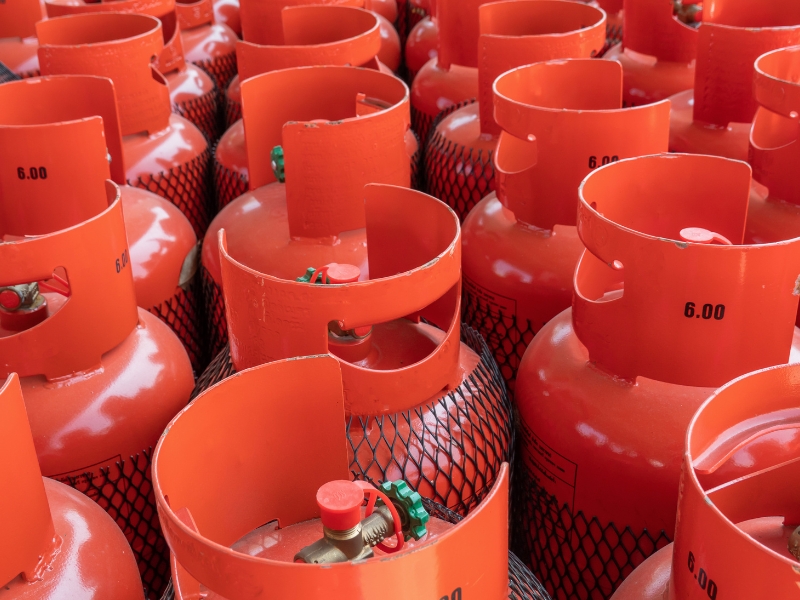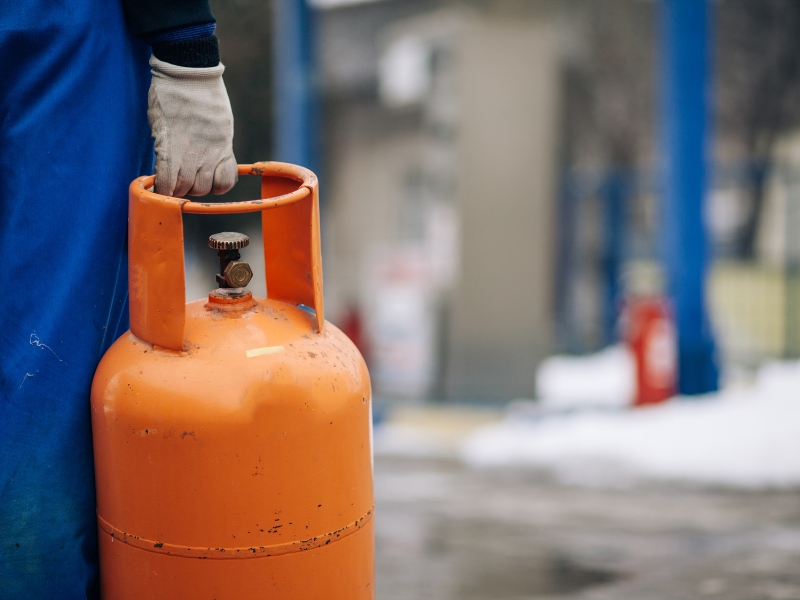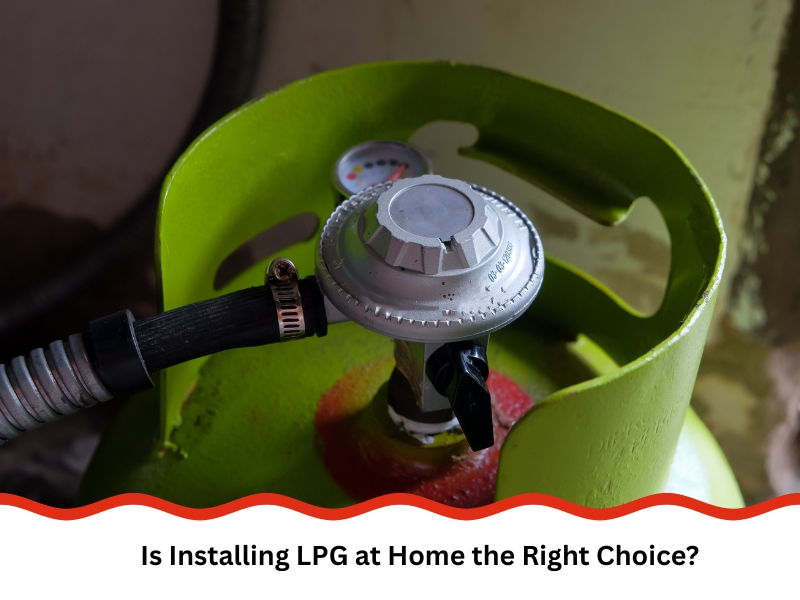Installing LPG at home provides a practical way to meet your household energy needs, especially if you live in an area without access to natural gas. It’s clean-burning, relatively affordable, and adaptable for a wide range of applications, from heating to cooking. However, before you proceed, it’s essential to understand both the benefits and the risks associated with home LPG systems. This article explores whether installing LPG at home is a smart move for your household.
What common hazards can arise when installing LPG at home?
Even when done legally, installing LPG at home can pose hazards if not handled properly. One slip-up during installation can expose your household to real dangers, ranging from minor faults to major disasters.
- Leaking gas lines can result from improperly sealed connectors or aged fittings.
- Inadequate ventilation can lead to carbon monoxide build-up, a deadly yet silent risk.
- Unprotected cylinders stored indoors or in unsafe locations heighten the risk.
- DIY jobs often overlook pressure checks, which are crucial for preventing leaks or line bursts.
Installing gas isn’t the kind of job where you want to “wing it.” You need licensed professionals who understand site-specific risks. For anyone considering it, it’s worth your time to discover safe and efficient methods for installing LPG at home from experts who follow rigorous standards.
Why do installation mistakes lead to serious gas issues?
Mistakes in LPG setup don’t just cause inconvenience—they can spark emergencies. Misjudging gas flow dynamics or incorrect connections can destabilise the system..
- Incorrect regulator selection can cause irregular pressure, which affects appliance performance.
- Failing to isolate the gas supply during installation can expose you to the risk of flash ignition.
- Loose joints or substandard pipework increase the likelihood of slow leaks, which can be challenging to detect.
- Overloading the supply system with too many appliances can push it beyond safe limits.
You don’t get second chances when dealing with gas. That’s why you should avoid relying on guesswork or assumptions. Taking the time to get it right from the outset prevents a world of headaches later on.

How can poor installation make LPG at home unsafe?
LPG is flammable, pressurised, and heavier than air—three traits that make it particularly risky when systems are poorly installed. Once leaked, the gas sinks to low points, such as basements or subfloors, forming an invisible hazard.
- Small leaks near ignition sources can result in sudden fire hazards.
- Improperly installed hoses may degrade more quickly and increase the likelihood of system failure.
- Without a certified compliance plate, emergency services may not know what they’re dealing with in a fire.
- Deficient grounding or exposed wiring near gas lines creates electrocution risks.
One often-overlooked danger is insufficient water flow to appliances. This not only affects how your system performs but can also signal deeper issues. If you’re unsure, it helps to identify signs that your home is experiencing low LPG gas pressure, as these indicate faults that require urgent attention.
Can installing LPG at home boost energy efficiency?
Despite the risks, LPG is incredibly efficient when correctly set up. It delivers more energy per unit than electricity in many cases and can be more cost-effective over time.
- Instant heat generation means you use less energy overall compared to electric systems.
- Modern LPG appliances are designed for low emissions and high efficiency.
- Switching from older systems to LPG can cut running costs, especially for hot water and heating.
- Using LPG during peak demand hours helps you avoid price surges from the power grid.
Choosing the proper setup makes all the difference. For example, understanding how LPG interacts with your appliances—and choosing the right LPG cylinder size for your home—helps maintain performance and keeps your setup economical.

What’s the best way to manage safety after installing LPG at home?
Once your system is up and running, safety doesn’t stop there. Ongoing checks and proper user practices are crucial for maintaining safety in the long term.
- Schedule yearly inspections by a licensed gas fitter to catch wear and tear.
- Store spare cylinders in shaded, ventilated areas—never indoors.
- Check flexible hoses and appliance fittings regularly for signs of cracking or rust.
- Install a carbon monoxide alarm in any enclosed space with gas appliances.
Staying compliant is just as important as maintenance. If you’re new to this kind of setup, it’s essential to understand gas compliance requirements for safe home installation, allowing you to follow local rules without guesswork. Doing so helps reduce risk, ensures insurance validity, and supports safe long-term use.
Are there legal codes for using LPG at home?
Yes, and ignoring them can cost you both financially and in terms of. In Australia, gas installations are regulated on a state-by-state basis, but core requirements remain consistent.
Legal Requirement | Why It Matters |
Licensed installation | Only certified gas fitters can install LPG to meet safety and insurance rules |
Compliance certificate | Confirms the work meets legal standards and protects you in case of inspection |
Mandatory leak testing | Prevents gas leaks before system sign-off |
Outdoor cylinder placement rules | Ensures cylinders are stored safely away from ignition and enclosed areas |
Appliance approval labelling | Confirms your LPG appliances are tested and suitable for use |
These aren’t just bureaucratic steps—they exist to protect you and your property. Understanding the importance of regular gas appliance inspections and maintenance helps prevent dangerous errors and future liability.
What should be considered before choosing this energy option?
Installing LPG at home isn’t for everyone. Weighing the practical pros and cons helps you make a confident, informed decision.
- If you live in a rural area, LPG can be a cost-effective alternative to electricity.
- Households that need reliable hot water and heating benefit from strong, on-demand performance.
- The upfront cost can be high, especially for full-system installations or switchovers.
- LPG prices fluctuate more than electricity, depending on the supplier and location.
Making the switch requires thought, not just about today’s usage, but also about how it might scale with your family’s or property’s needs.
Final thoughts
Installing LPG at home is a decision that carries weight. It comes with clear gains in flexibility and performance, but also demands a firm grasp on safety, compliance, and planning. If you’re still unsure, take a moment to discover how Apex Gas Heater Service can assist with your gas needs and help you decide what suits your setup best.

